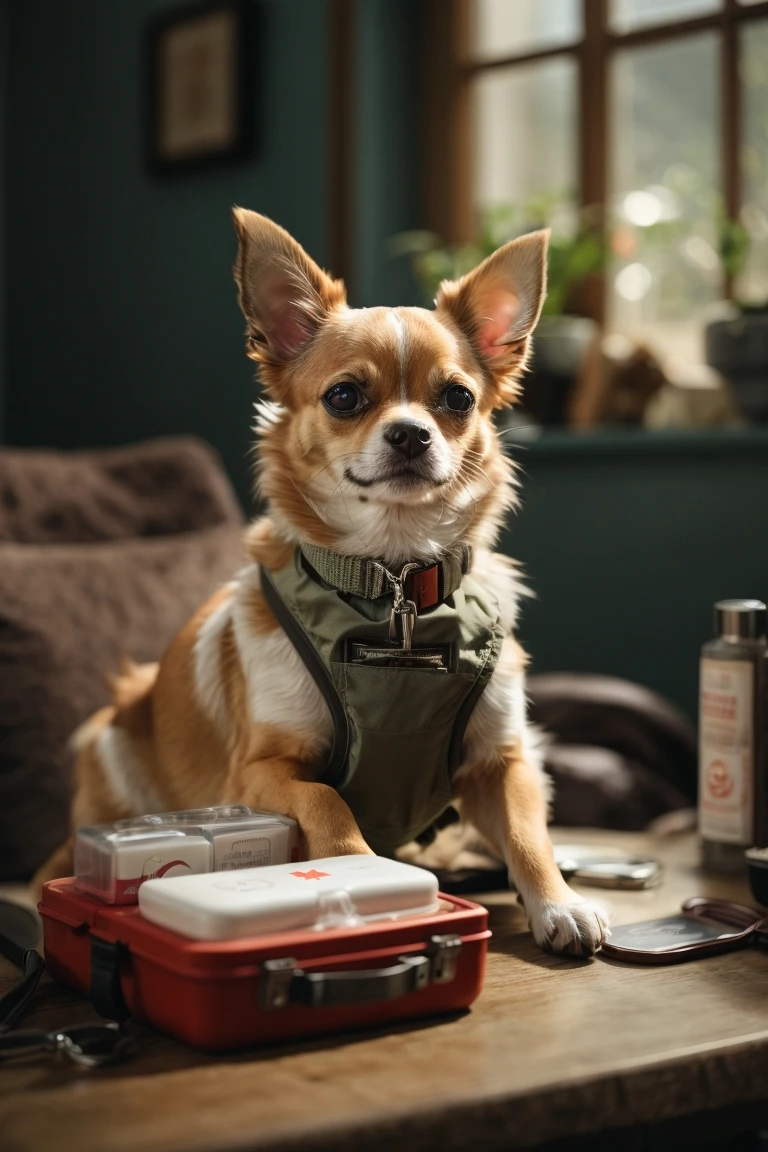How to Create a Doggy First Aid Kit for Emergencies

Having the right supplies on hand to treat injuries or illnesses quickly is crucial for your dog's health and safety. Putting together a well-stocked first aid kit ensures you'll be prepared for medical situations. This guide covers the essential items your dog first aid kit should contain and tips for proper storage and use.
Why a Dog First Aid Kit Matters
Unfortunately, dog injuries and illnesses can happen anytime without warning. Your pet may cut their paw, get stung by a bee, eat something toxic, or have an allergic reaction. Being equipped and ready to provide prompt first aid care could save your dog's life in an emergency.
A complete first aid kit allows you to treat minor wounds, control bleeding or vomiting, and stabilize your dog until you can get to the vet. Having the right supplies on hand brings peace of mind and could prevent a minor issue from becoming serious.
Essential Medical Supplies
Your dog first aid kit should contain basic medical materials to treat trauma, wounds, and other common issues:
- Gauze pads/rolls, cotton swabs - clean and bandage lacerations or cuts
- Adhesive tape, self-adherent bandages - secure dressings and gauze
- Antiseptic wipes and antibiotic ointment - disinfect and prevent infection
- Eye wash and ear cleanser - flush out eye/ear irritants
- Hydrogen peroxide - induce vomiting if ingestion is suspected
- Oral syringes - give oral medications or fluids
- Scissors and tweezers - remove debris from wounds
- Thermometer - check temperature
Having these supplies allows you to clean and dress injuries, prevent infection, and address poisoning risks.
Key Medications to Include
Certain over-the-counter medications can be safely administered at home for common dog ailments:
- Antihistamine (Benadryl) - treat allergic reactions
- Antidiarrheal - control diarrhea
- Antibiotic ointment (Neosporin) - prevent infections
- Pain reliever (Acetaminophen) - ease pain
- Anti-nausea - control vomiting
Always check with your vet on proper dosing based on your dog's weight and health condition. Only use human medications recommended as safe for dogs.
Other First Aid Kit Essentials
In addition to medical supplies, be sure to include:
- Vet/emergency contacts - wallet card with phone numbers
- Blanket - maintains body warmth
- Non-latex gloves - for safely handling wounds
- Bottle of water - for rinsing wounds or cooling burns
- Instant cold pack - reduces swelling and bruising
- Pet first aid guide - reference for basic procedures
These items support your efforts to care for injured or ill pets until veterinary treatment is available.
Optional Additions
Consider adding these extras for expanded emergency capabilities:
- Saline eye wash - flush irritants from eyes
- Mild soap - clean minor wounds
- Activated charcoal - absorb ingested poisons
- Anti-bacterial ointment - for wounds at risk of infection
- Styptic powder - stops minor bleeding
- Turkey baster/bulb syringe - remove mucus or fluids from airway
- Instant heat pack - provide warmth to treat hypothermia
- Dog treats/chews - comfort an anxious or upset dog
Proper First Aid Kit Maintenance
To ensure supplies are available when needed:
- Store in an easily accessible spot like a hallway closet
- Use a clean, watertight plastic container to protect contents
- Check expiration dates twice yearly and replace expired items
- Restock any used supplies promptly
- Keep your pet's medical history/info updated
- Label the kit clearly as “Dog First Aid”
Proper organization and replenishment of your first aid kit is just as important as the contents.
When to Use Your Dog First Aid Kit
Your kit can provide temporary care for issues like:
- Minor cuts, scrapes or burns
- Bee stings or insect bites
- Sprains, strains or limping
- Allergic reactions - itchiness, hives
- Diarrhea or vomiting
- Choking or coughing
- Fevers
However, urgent veterinary care is still required for situations like:
- Heavy bleeding or large wounds
- Ingestion of toxins or poisons
- Signs of shock - weakness, pale gums
- Difficulty breathing or loss of consciousness
- Inability to walk or move limbs
- Seizures
- Continued vomiting or diarrhea
Think of your first aid kit as a bridge to get prompt veterinary treatment when critical. Don't hesitate to call your vet or visit an emergency animal hospital for any significant or persistent medical issues. Timely action is crucial for your dog's wellbeing.
Conclusion
Having a well-stocked first aid kit allows you to effectively care for your dog in the event of an unexpected injury or illness until you can get them to proper medical facilities. Include essential supplies to treat wounds, control bleeding, induce vomiting, and more. Check and replenish the kit's contents regularly so you're always prepared in an emergency. Your quick action using the first aid supplies could help save your dog's life one day.